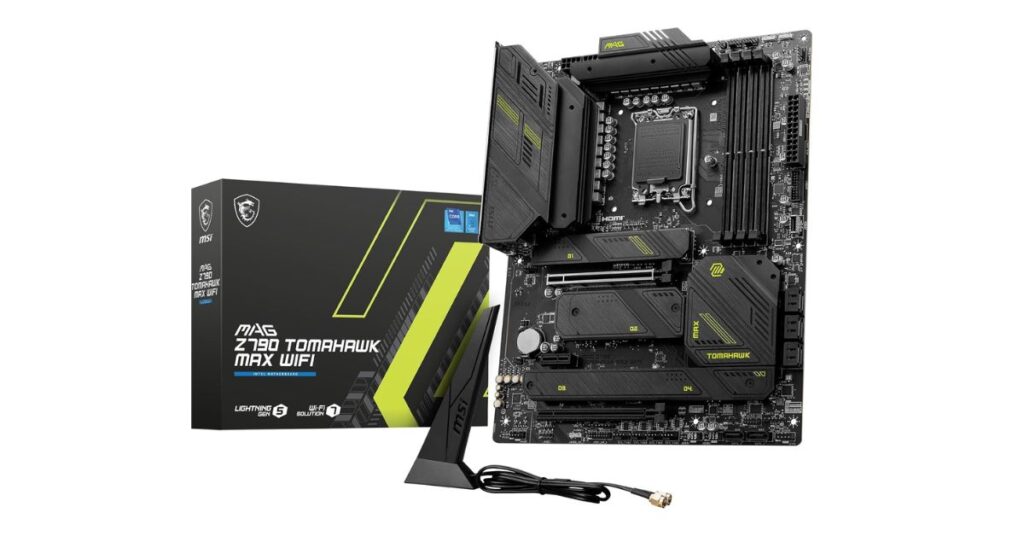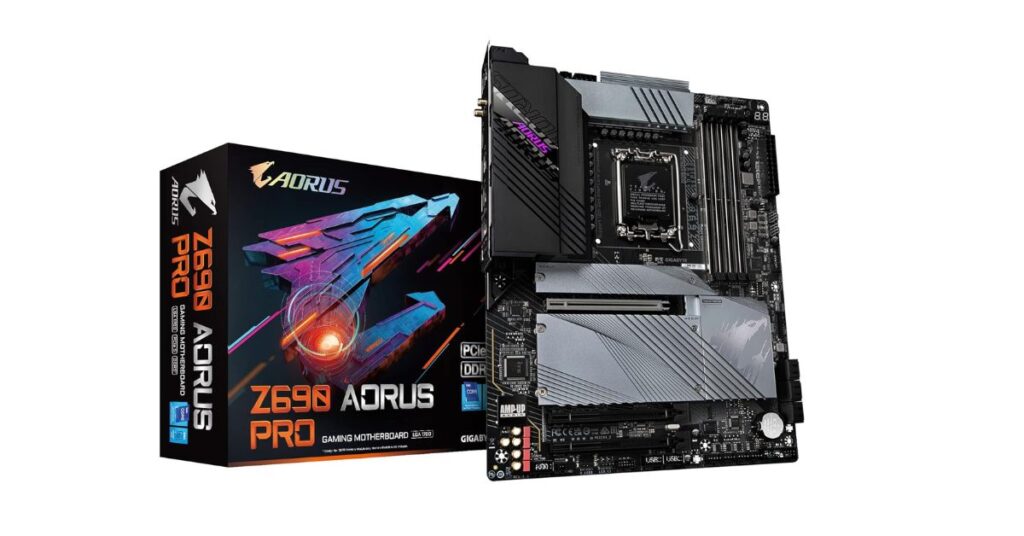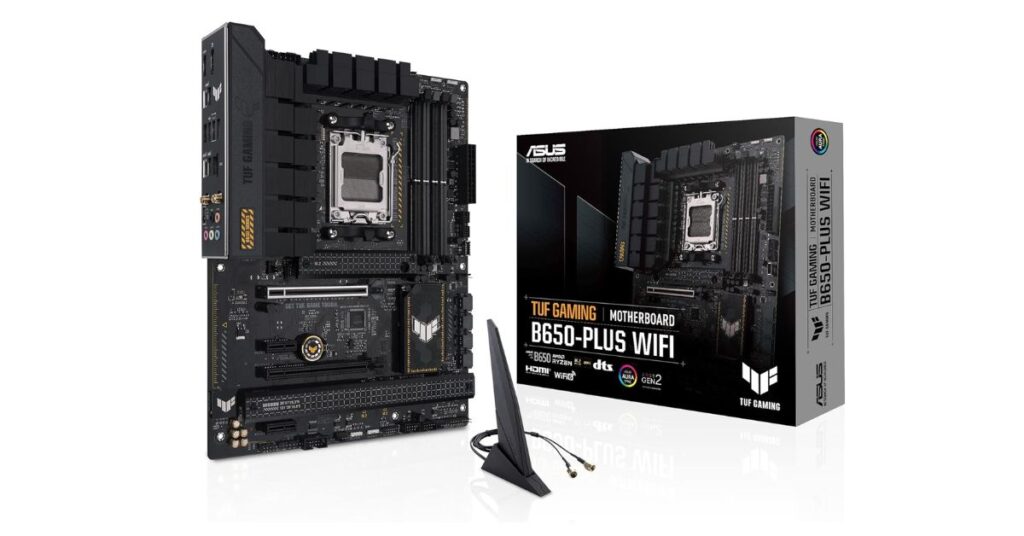A vital component is at the center of every gaming rig: the motherboard. Innovation and technological advancements are constantly changing the gaming landscape, and this is the dynamic realm of gaming.
The motherboard, sometimes referred to as the “backbone” of a computer system, is essential to coordinating the harmonious arrangement of hardware parts. Can you use any motherboard for gaming? is a question that frequently reverberates through the digital corridors as enthusiasts build the ultimate gaming rig.
There are many facets to this question, which are woven together by performance expectations, gaming preferences, and technological compatibility. Although diversity is highly valued in the gaming community, not all motherboards are made equally when it comes to meeting the unique needs of gamers.
Table of Contents
Can you use any motherboard for gaming?
Form Factor:
There are various form factors for motherboards, including ATX, Micro-ATX, and Mini-ITX. The form factor you choose will rely on how big your gaming setup is and how much room it takes up in your computer case. Mini-ITX boards are small and ideal for smaller builds, while ATX motherboards are larger and have more expansion slots. Selecting a motherboard that both fits your case and offers the expansion options you need to meet your gaming demands is essential.
Chipset Compatibility:
One of the most important factors affecting a motherboard’s performance is its chipset’s compatibility with different processors, memory configurations, and peripheral devices. Selecting a motherboard with a chipset that supports the features you need is crucial for gaming.
For gaming setups, high-performance chipsets with multiple PCIe lanes for graphics cards and advanced features like overclocking are often preferred. Examples of these chipsets are the AMD X and Intel Z series.

Processor Compatibility:
Make sure the motherboard is compatible with the processor you plan to use because different motherboards support different CPU sockets. The two main CPU manufacturers, AMD and Intel, have different processor socket designs.
For example, 10th and 11th-generation Intel Core processors can be used with an Intel motherboard that has an LGA 1200 socket. Meanwhile, a variety of Ryzen processors can be supported by an AMD motherboard that has an AM4 socket. Always verify if the motherboard is compatible with the particular CPU you intend to use.
Expansion cards and Graphics:
High-end graphics cards and other expansion cards are frequently used in gaming. Verify that the motherboard supports the most recent graphics card standards and has the required PCIe slots. Depending on your gaming needs, you should also take into account additional expansion slots for peripherals like sound cards, capture cards, or NVMe SSDs.
RAM Compatibility:
This is yet another important consideration. For information on supported RAM types, frequencies, and maximum capacities, consult the motherboard’s specifications. Higher RAM capacities and faster speeds are advantageous for many modern games, so choosing a motherboard that can support your preferred memory configuration is essential for the best possible gaming experience.
Ports and connectivity:
Specialized ports and connectivity choices are frequently needed for gaming accessories and peripherals. Depending on how you want to play games, you should think about things like USB ports, Ethernet ports, audio jacks, and Wi-Fi capabilities. Make sure the motherboard has the connectors your gaming accessories and peripherals require.
BIOS and Firmware Updates:
To enhance compatibility, performance, and security, motherboard manufacturers publish BIOS or firmware updates. Make sure your motherboard model has the most recent updates before assembling your gaming setup. To guarantee flawless compatibility with the newest hardware and software, some updates might be required.
Motherboard Vs Mainboard A Detailed Comparison
Read this helpful article on your computer as well.
Does gaming require a specific type of motherboard?
Indeed, to ensure peak performance and compatibility with the demanding specifications of contemporary games, gaming frequently necessitates the use of a particular kind of motherboard.

The following factors make a dedicated gaming motherboard necessary:
- Support for Graphics Cards: To handle complex graphics and rendering, gaming frequently requires high-performance graphics cards. The newest graphics cards should be supported by a gaming motherboard’s PCIe slots, especially if you intend to use multiple GPUs in a CrossFireX or SLI configuration.
- Features of the Chipset: Gaming motherboards frequently have chipsets with features that are helpful for gaming. For instance, gaming-oriented chipsets often have enhanced audio components, multiple PCIe lanes for graphics and storage devices, and overclocking capabilities.
- Memory Performance: More RAM and faster memory speeds are advantageous for many contemporary games. To guarantee responsiveness and fluid gameplay, gaming motherboards are built to accommodate the newest DDR4 or DDR5 memory modules, many of which have overclocking capabilities.
- Processor Compatibility: High-performance CPUs are generally compatible with gaming motherboards, offering the power and features required for a seamless gaming experience. They frequently allow overclocking, which enables users to get more performance out of their processors.
- Cooling Remedies: Playing video games intensely produces a lot of heat. Enhanced cooling solutions, like extra fan headers, heatsinks, and sophisticated temperature monitoring features, are frequently found on gaming motherboards. These components aid in preserving the CPU’s and other vital components’ ideal temperatures.
- Peripheral Connectivity: Gaming accessories like headsets, keyboards, and mice frequently have specifications. To meet the demands of gamers, gaming motherboards are frequently fitted with a multitude of USB ports, audio jacks, and occasionally specialized features like RGB lighting that can be customized and buttons that can be programmed.
- Features and Updates for BIOS: Gaming motherboards usually come with intuitive BIOS interfaces that include a wealth of options for fine-tuning system settings. For gamers who wish to overclock their components for better performance, this is especially crucial. Manufacturers also regularly update their BIOS to guarantee compatibility with the newest gaming hardware and software.
- Form Factor and Aesthetics: Gaming motherboards often have aesthetically pleasing designs with RGB lighting that can be customized, though this is not strictly related to performance. Additionally, the form factor may change to support different build preferences and case sizes, providing choices such as ATX, Micro-ATX, and Mini-ITX.
In summary, although a general-purpose motherboard can be used for gaming, choosing a motherboard made especially for gaming has several benefits. These benefits include improved performance features, improved compatibility with high-end components, and a design that caters to the needs and tastes of gamers.
The top gaming motherboard list
Here is a list of some well-known gaming motherboards for various budgets and operating systems. Remember that since then, more recent models might have been released, so it’s best to check for the most recent ratings and details. Furthermore, confirm that it is compatible with the CPU and other parts that you have chosen.
MSI MAG Z790 Tomahawk WiFi:

Specification:
- Supports Intel Core Next-gen/13th Gen/12th Gen Pentium Gold and Celeron processors for LGA 1700 socket
- Supports DDR5 Memory, up to 7800+(OC) MHz
- Enhanced Power Design: 16+1+1 Mirrored Power Arrangement, dual 8-pin CPU power connectors, Core Boost, Memory Boost
- Lightning Fast Game experience: PCIe 5.0 slot, Lightning Gen 5 M.2, USB 3.2 Gen 2×2
- Premium Thermal Solution: Extended Heatsink Design and M.2 Shield Frozr are built for high-performance systems and non-stop works
Gigabyte Z690 Aorus Pro

Specification:
- Intel LGA 1700 Socket: Supports 12th Gen Intel Core Series Processors
- DDR5 Compatible: Dual Channel Non-ECC Unbuffered DDR5
- Commanding Power Design: 16+1+2 Twin Hybrid Digital VRM Design with 90A DrMOS with Tantalum Polymer Capacitors
- Cutting-Edge Thermal Design: Fully Covered Thermal Design and High Coverage MOSFET Heatsinks, Enlarged Thermal Guards
- Next-Gen Connectivity: PCIe 5.0, Quad NVMe PCIe 4.0 x4 M.2, SuperSpeed USB 3.2 Gen 2×2 Type-C
- Fast Networking: Intel 2.5 GbE LAN, WiFi 6 802.11ax, BT5
- Dynamic Audio: Hi-Fi Audio with ALC4080 and WIMA Audio Capacitors
ASUS TUF Gaming B650-PLUS

Specification:
- AMD AM5 socket: Ready for AMD Ryzen 7000 Series desktop processors
- Enhanced power solution: 12 plus2 teamed power stages, 8 plus4 ProCool sockets, alloy chokes, and durable capacitors for stable power delivery
- Next-gen connectivity: M.2 PCIe 5.0, USB 3.2 Gen2x2 Type-C, front USB 3.2 Gen 1 Type-C, USB4 support
- Made for Online Gaming: WiFi 6, Realtek 2.5 Gb Ethernet and TUF LANGuard
- Two-way AI Noise Cancelation: Reduces background noise from the microphone and audio output for crystal-clear communication in games or video conferences
- Comprehensive cooling: Enlarged VRM and PCH heatsinks, M.2 heatsinks, hybrid fan headers, and Fan Xpert 2 plus utility in Armoury Crate
- Aura Sync RGB effects: Stylish edge lighting design, addressable RGB headers, and RGB strip header
check for the latest reviews and user feedback to ensure that the motherboard meets your gaming needs and expectations.
How many items do have a high-end gaming PC required?
Assembling a collection of parts to guarantee peak performance and a captivating gaming experience is the process of building a high-graphics gaming computer. The precise parts required can change depending on personal preferences, financial limitations, and the intended degree of gaming performance.

An overall list of essential components needed for a high-graphics gaming PC is as follows:
- Central Processing Unit (CPU):
- The CPU is the brain of the computer and plays a crucial role in gaming performance. High-end gaming PCs often feature multi-core processors with high clock speeds for efficient gaming.
- Graphics Processing Unit (GPU):
- A powerful GPU is essential for high-graphics gaming. Choose a dedicated gaming graphics card with sufficient VRAM to handle demanding graphical tasks.
- Motherboard:
- Select a motherboard that is compatible with your chosen CPU and GPU. Gaming motherboards often have features such as multiple PCIe slots, robust power delivery, and overclocking capabilities.
- Random Access Memory (RAM):
- Adequate RAM is crucial for gaming performance. High-graphics gaming PCs typically have 16GB to 32GB of fast DDR4 or DDR5 RAM to handle multitasking and gaming requirements.
- Storage:
- Choose fast storage solutions to reduce loading times. Solid State Drives (SSDs) are popular for the operating system and frequently used games, while larger Hard Disk Drives (HDDs) provide additional storage capacity.
- Power Supply Unit (PSU):
- A high-quality power supply is essential for system stability. Ensure the PSU has sufficient wattage to support your components and is from a reputable brand.
- Cooling Solutions:
- Effective cooling is crucial for maintaining optimal temperatures, especially during intensive gaming sessions. This may include air or liquid cooling solutions for the CPU and additional case fans.
- Case:
- Select a case that accommodates your components and provides good airflow. Gaming cases often have features like cable management, RGB lighting, and space for larger graphics cards.
- Operating System:
- Install a gaming-friendly operating system such as Windows 10, which is widely supported by game developers.
- Peripherals:
- Include gaming peripherals such as a high-quality monitor, gaming keyboard, mouse, and headset for a complete gaming setup.
- Networking:
- For online gaming, ensure a stable and fast internet connection. This may involve using a wired Ethernet connection or a high-speed Wi-Fi adapter.
- Optional:
- Additional components like RGB lighting, sound cards, or capture cards can be added based on personal preferences and gaming needs.
It’s important to note that the specific components and their requirements might change depending on personal preferences, financial limitations, and the most recent technological developments. Keep an eye out for updated reviews and recommendations for hardware to make sure your high-end gaming PC has the best parts available for the best possible gaming experience.

Is purchasing a cheap motherboard safe?
Cheap motherboards can be appropriate for low-cost builds or less demanding tasks, but it’s important to strike a balance between price and necessary features. Durability, strong power delivery, and some gaming-specific features might be absent from inexpensive motherboards.
Why Are Motherboards So Expensive?
Read this helpful article on your computer as well.
For office work, basic computing requirements, or backup systems where sophisticated features are not necessary, they are typically safer. Purchasing a mid-range or higher-quality motherboard is advised for gaming or high-performance computing to guarantee long-term reliability and compatibility with advanced components.
How much does it cost for a gaming motherboard?
A gaming motherboard’s price can vary significantly depending on its brand, features, and specifications. Gaming motherboards typically cost between $80 and $500 or more. Budget or entry-level gaming motherboards tend to be cheaper in this range, whereas enthusiast-grade or high-end models with robust components and advanced features are usually more expensive.
The exact cost is determined by the required performance, interoperability with gaming hardware, and extra features like RGB lighting, premium audio, and overclocking support. It is imperative to take into account personal preferences and financial limitations when choosing a gaming motherboard.
How much RAM for good gaming?
The amount of RAM needed for good gaming performance can depend on various factors, including the specific games you play and the overall system requirements.
Here are some general recommendations:
- 8GB RAM:
- This is the minimum amount of RAM recommended for most modern games. It can handle less demanding titles and some multitasking. However, for more recent and graphics-intensive games, 8GB may limit performance.
- 16GB RAM:
- For a smoother gaming experience and improved multitasking, especially with modern games and applications, 16GB of RAM is a common and widely recommended choice. It provides a good balance between performance and cost.
- 32GB RAM or More:
- Going beyond 16GB is generally unnecessary for most gaming scenarios. However, if you engage in content creation, video editing, or other memory-intensive tasks alongside gaming, 32GB or more may be beneficial.
Additionally, keep an eye on the RAM speed (measured in MHz). Faster RAM can provide a slight performance boost, particularly for integrated graphics or CPU-bound scenarios. However, the difference may not be as noticeable in all gaming situations.
Conclusion
Choosing your motherboards carefully is essential. For basic computing needs, less expensive options might be sufficient, but for gamers who want future-proofing and optimal performance, mid-range or high-end motherboards with features specifically designed for gaming needs should be taken into consideration. Strong power delivery, lots of PCIe slots, and support for the newest graphics cards and processors are a few of these.
In the end, creating the perfect gaming setup requires a carefully calibrated combination of parts, each of which is essential to providing the immersive, high-performance gaming experience that aficionados desire. Maintaining knowledge and flexibility is essential for creating a gaming setup that will last as technology develops. A careful approach to hardware selection guarantees that the gaming experience is both pleasurable and future-ready, regardless of whether the goal is to push the limits of gaming excellence or save money.
Frequently Asked Questions
Can I use any motherboard for gaming, or do I need a specific gaming motherboard?
While any motherboard can be used for gaming, dedicated gaming motherboards frequently offer features like multiple PCIe slots, strong power delivery, and overclocking capabilities. These improve compatibility with high-end components and gaming performance.
What factors should I consider when choosing a gaming motherboard?
Think about things like power delivery, form factor, chipset features, PCIe slots, compatibility with the CPU and GPU of your choice, and additional gaming-specific features like RGB lighting and overclocking support.
Do I need a specific type of RAM for gaming?
While many RAM types work well with games, DDR4 is currently the most popular and extensively supported. For best results, make sure the RAM you select is compatible with your motherboard and take into account variables like speed and latency.
Is it necessary to overclock for gaming?
While it’s not required for gaming, overclocking can occasionally result in better performance. Select a motherboard and CPU that allow overclocking, and make sure you have enough cooling options if you’re interested in doing so.
How often should I upgrade my gaming PC components?
The rate at which technology is developing and individual preferences determine how frequently upgrades are made. Upgrading every three to five years is the norm, but players who desire to be at the forefront may decide to upgrade more regularly.
